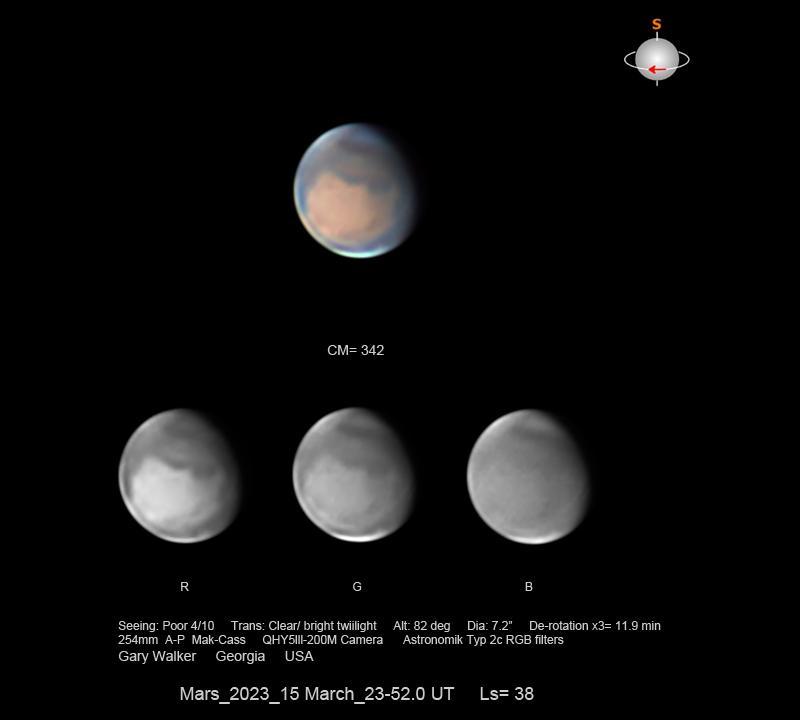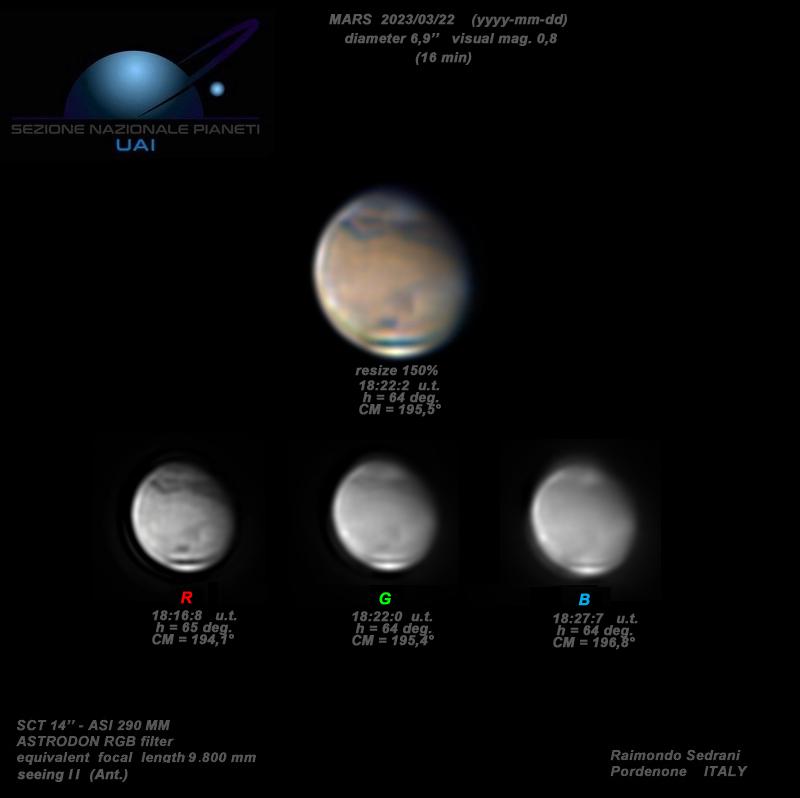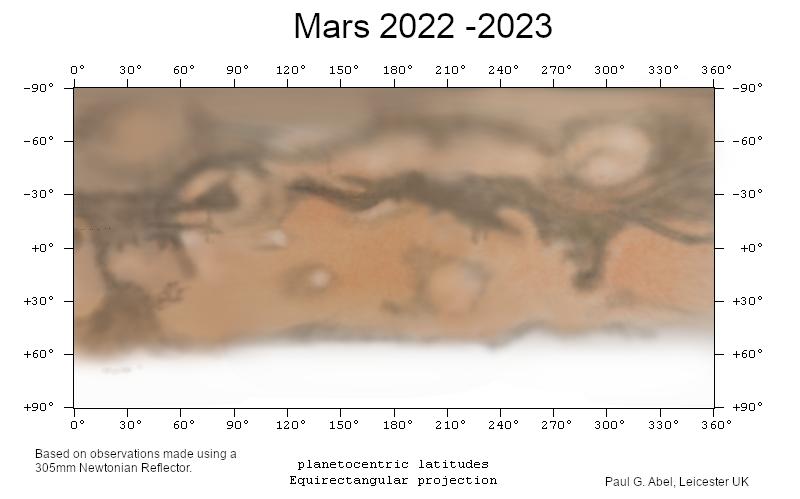2023 March 27
Mars Opposition Blog 27 March 2023
Observations are continuing, although the disk diameter is now only some 6 arcseconds. It is a challenging planet visually, requiring high powers and good seeing. I am hoping that as many as possible will continue, but I am going to make this blog post my last one of the apparition. Later, I will do a write-up for the Journal.
An amended list of observers has been posted on the front page.
The NPC has considerably decreased in size, but it is not yet especially well presented. The clouds over the S. pole are still impressive.
White cloud activity in general has continued, with a very bright bluish-white cloud persisting over Argyre in recent weeks. M.Lonsdale’s images of Feb 19-20 indicate a weak brightening at Edom in the afternoon. This was found after further investigation to be due merely to diurnal cloud, and is unrelated to the predicted ‘flashes’ mentioned in an earlier posting. I made a careful search of all data for the period Jan-Feb preceding this date but without any other positive result.
P.G.Abel has compiled an apparition map from his own drawings and I am posting it here. On his BAA member page there is a second version with names added. Makoto Adachi likewise has made a map from the images submitted to ALPO Japan, and will be publishing it on that website.
Ls has recently passed the 40 degree mark and now is the moment when good blue-violet images are showing the complete Equatorial Cloud Band (ECB), as we would predict. Here is an image by R.Sedrani for March 22, where the band stretches from Elysium, which is approaching the CM, towards Isidis Regio/Libya on the morning terminator. (Note also the evening orographic clouds upon this image.) The ECB scatters blue light, and it can cause the Syrtis Major to appear slightly bluish at the edge of the disk where the effect is enhanced. See the image by G.Walker. (See also the broad, warm-toned E-W dark belt upon this image, located just north of the S. polar cloud: this seems to be one of the features we called ‘violet holes’ in past reports where the atmospheric concentration of water ice is locally greatly reduced.) But even near the CM the ECB effect can be detectable. I noticed it upon an image by J.Willinghan taken on March 21.
The Director will be speaking at the Mercury & Venus Section meeting on the Saturday of the forthcoming Winchester weekend. I will also bring an historical exhibition. If you are going to be there please come and say hello, and do send me an email in advance to say that you are attending, so we can look out for one another.
Thanks again for all your efforts this apparition.



Previous Post: 19 February 2023
Entire Mars Opposition 2022 blog
| The British Astronomical Association supports amateur astronomers around the UK and the rest of the world. Find out more about the BAA or join us. |
